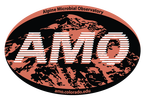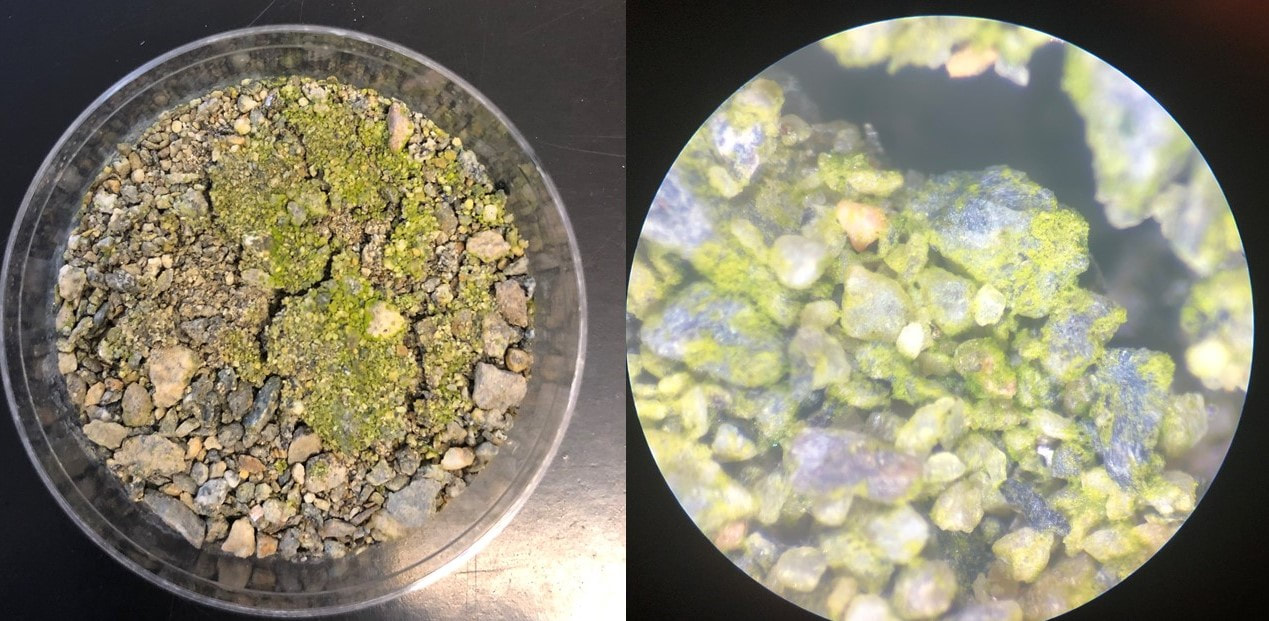|
by Adam Solon When studying eukaryotic microbes, familiar groupings such as fungi, green algae, and micro animals, such as Tardigrades (water bears!), are usually found in communities. However, there also exists a large diversity of life that do not fit into those taxonomic assignments. Many are members of the broad grouping known as Protists. Protists are not united in any sort of phylogenetic connection and exist as a catchall for eukaryotic microbes that are not fungi, green algae, or animals. Among those are the organisms that make up the SAR supergroup (Stramenopiles, Alveolates, and Rhizaria). The Stramenopiles include a wide range of organisms including kelp, diatoms, and parasites such as the genus Phytophthora, infamous for causing the Great Irish Potato famine (Derelle et al. 2016). When conducting a lab experiment with soils from Antarctica we found large relative abundances of Xanthophyceae, a member of the Stramenopiles group. Xanthophyceae are a taxonomic class of the Stramenopiles and have the common name yellow-green algae. While they have the name algae, they are distantly related to the more commonly known green algae. Morphological-physiological characteristics that distinguish Xanthophyceae include: photosynthesis (i.e. use sunlight for energy, like plants), heterokonate (i.e. two flagella (threadlike appendages typically used for swimming) of different lengths, one forward tinsel flagellum and one backward whiplash flagellum); and capability of asexual or sexual reproduction (Sahoo & Kumar 2015). They also have a wide variety of characteristics in which they may differ including: uninucleate or multinucleate; unicellular, colonial or filamentous; and various combinations of the following pigments which give them a yellowish-green color- chlorophyll a and c, β-carotene and xanthophylls (Maistro et al. 2017). One of the clear distinctions between yellow-green algae and green algae is a lack of chlorophyll b in yellow-green algae.
Typically found in freshwater and moist soils, with a few in marine habitats, Xanthophyceae have been discovered in both polar regions (Novis et al. 2015, Kvíderová & Elster 2017). Using soils collected from Taylor Valley in the Dry Valleys of Antarctica, we introduced inputs of water along with an initial treatment of nitrogen and phosphorus to the normally dry, oligotrophic (nutrient poor) soils from this polar desert. These little critters were able to take advantage of those nutrient additions and the subsequent water inputs and contributed to the development of a biocrust that formed on the surface. Our DNA-seq analysis revealed they made up a significant level of relative abundance in those crusts (Fig 1). References: Derelle, R., López-García, P., Timpano, H., & Moreira, D. (2016). A phylogenomic framework to study the diversity and evolution of stramenopiles (= heterokonts). Molecular biology and evolution, 33(11), 2890-2898. Kvíderová, J., & Elster, J. (2017). Photosynthetic activity of Arctic Vaucheria (Xanthophyceae) measured in microcosmos. Czech Polar Reports, 7(1), 52-61. Maistro, S., Broady, P., Andreoli, C., & Negrisolo, E. (2017). Xanthophyceae. Handbook of the Protists, 407-434. Novis, P. M., Aislabie, J., Turner, S., & McLeod, M. (2015). Chlorophyta, Xanthophyceae and Cyanobacteria in Wright Valley, Antarctica. Antarctic Science, 27(5), 439-454. Sahoo, D., & Kumar, S. (2015). Xanthophyceae, Euglenophyceae and Dinophyceae. In The algae world (pp. 259-305). Springer, Dordrecht.
0 Comments
Leave a Reply. |
AuthorVarious lab members contribute to the MoM Blog Archives
October 2023
Categories |


 RSS Feed
RSS Feed
